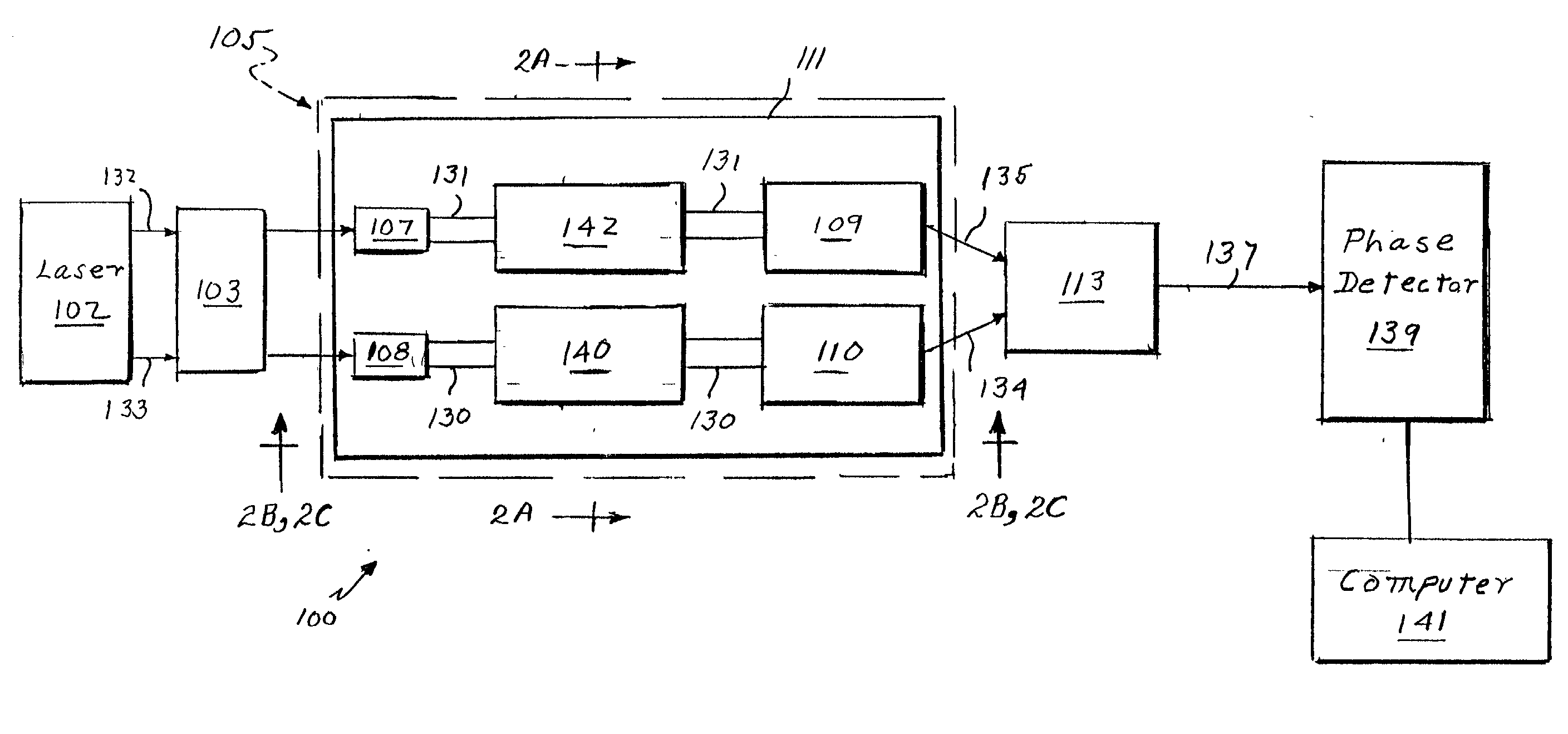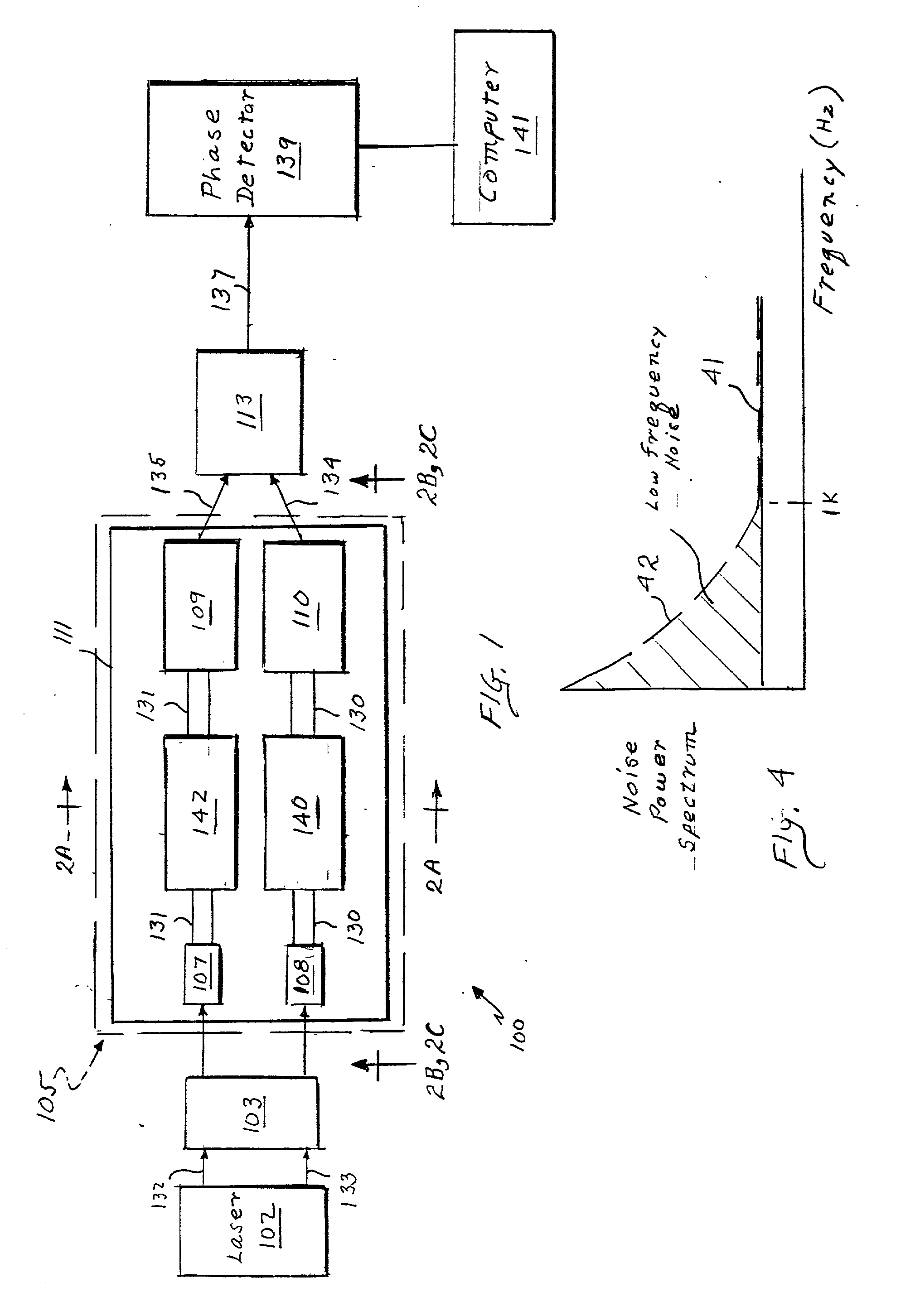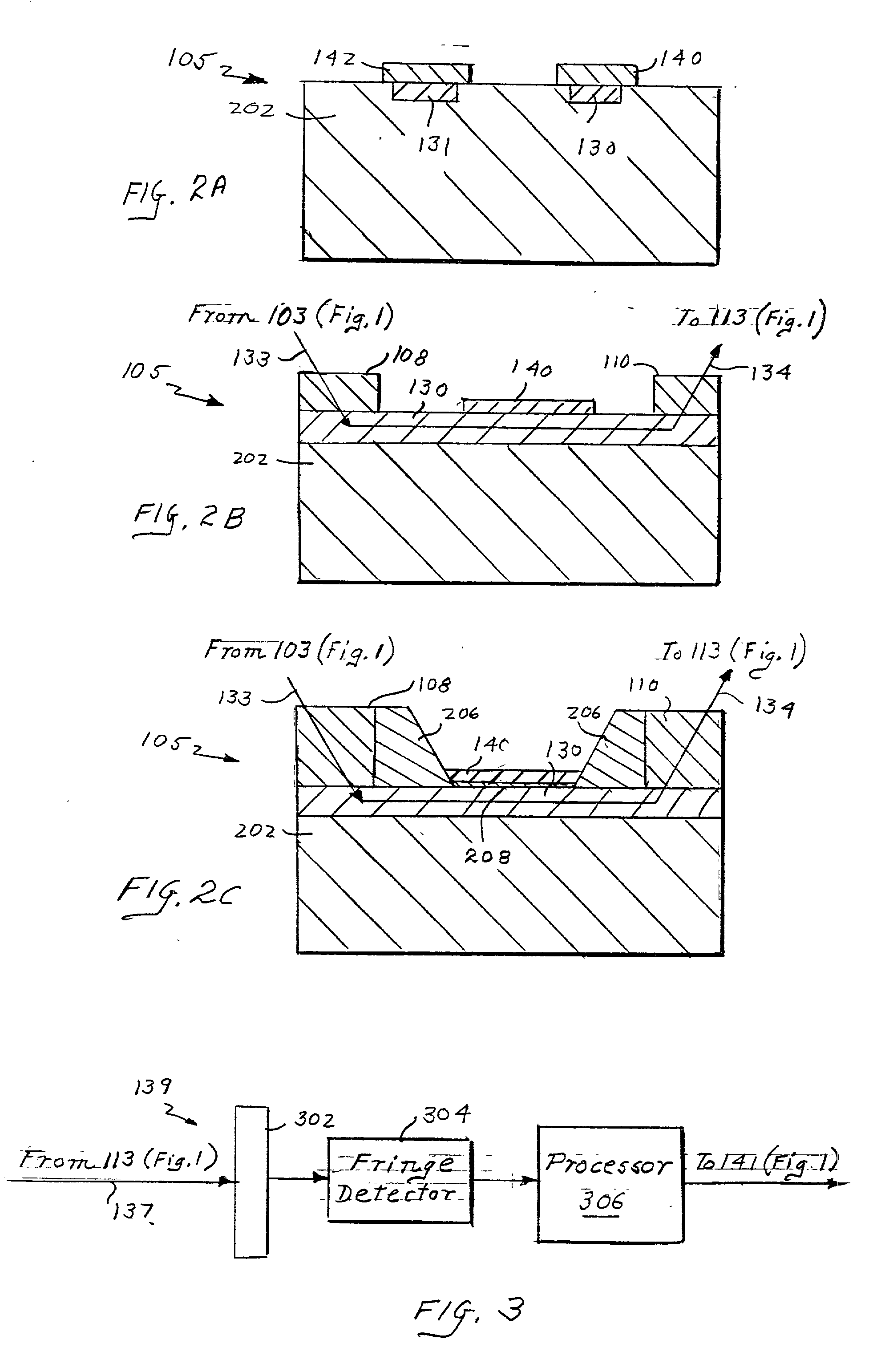Doubly-differential interferometer and method for evanescent wave surface detection
a technology of evanescent wave surface and interferometer, which is applied in the field of optical sensors, can solve the problems of affecting the utility of tagging targets, affecting the detection and/or measurement of desired targets, and difficulty in ensuring that only the target analytes are tagged,
- Summary
- Abstract
- Description
- Claims
- Application Information
AI Technical Summary
Benefits of technology
Problems solved by technology
Method used
Image
Examples
Embodiment Construction
[0032] As shown in FIG. 1, an optical sensing platform 100 in accordance with one embodiment in the present invention includes a light source, e.g., laser 102, a polarization modulator 103, an integrated optical sensor 105, a beam combiner 113, a phase detector 139, and a computer 141.
[0033] The light source, e.g., laser 102, injects beams 132, 133 into a polarization modulator 103. The polarization modulator 103 rotates, or modulates, the polarization of the incident light to enable the excitement of two orthogonally polarized guided modes, e.g., the TE.sub.m (transverse electric) and TM.sub.m (transverse magnetic) modes, in each of the measurement and reference paths 130, 131. Moreover, the polarization modulator 103 causes the two polarized guided modes to propagate sequentially through both the measurement and reference paths 130, 131. The polarization modulator 103 can be of any type that is well known to those of ordinary skill in the art, e.g., a ferro-electric liquid crystal...
PUM
| Property | Measurement | Unit |
|---|---|---|
| temporal frequencies | aaaaa | aaaaa |
| frequencies | aaaaa | aaaaa |
| frequency | aaaaa | aaaaa |
Abstract
Description
Claims
Application Information
 Login to View More
Login to View More - R&D
- Intellectual Property
- Life Sciences
- Materials
- Tech Scout
- Unparalleled Data Quality
- Higher Quality Content
- 60% Fewer Hallucinations
Browse by: Latest US Patents, China's latest patents, Technical Efficacy Thesaurus, Application Domain, Technology Topic, Popular Technical Reports.
© 2025 PatSnap. All rights reserved.Legal|Privacy policy|Modern Slavery Act Transparency Statement|Sitemap|About US| Contact US: help@patsnap.com



